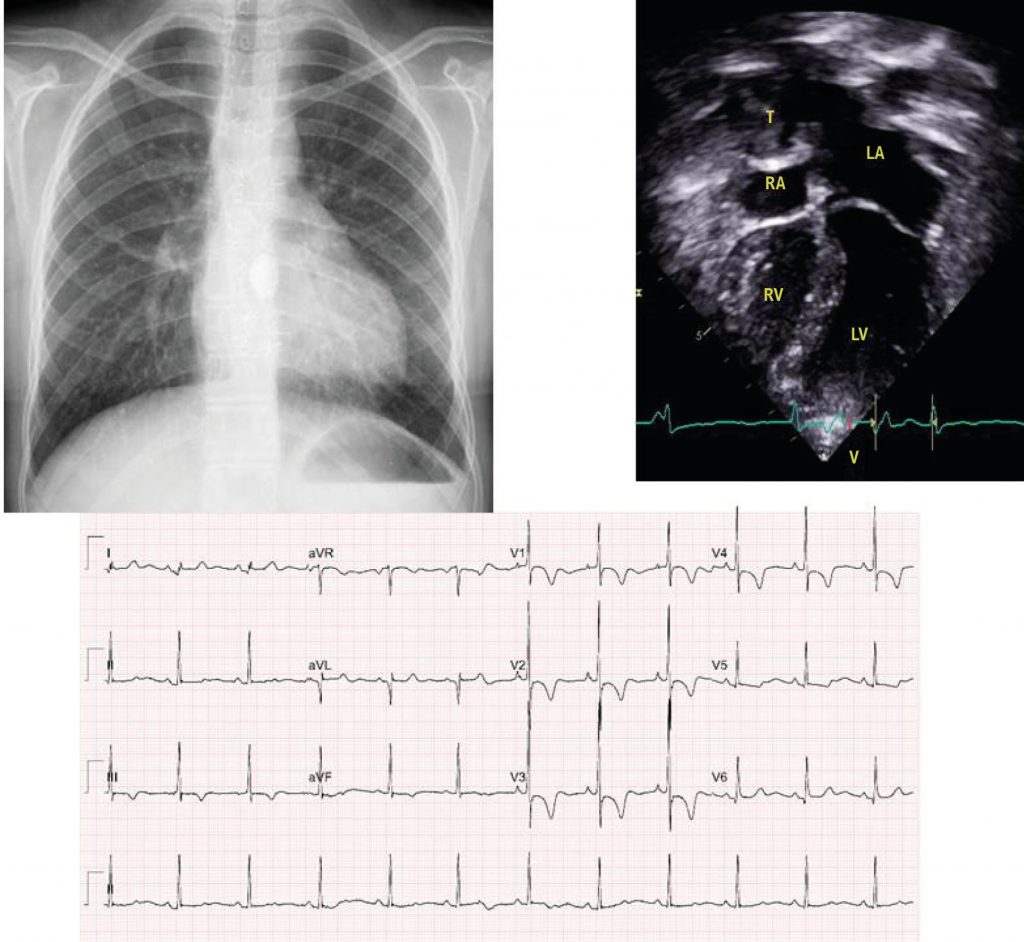Arq. Bras. Cardiol. 2021; 116(6): 1161-1164
17-Year-Old Man with Pulmonary Atresia and Intact Ventricular Septum Submitted to Fontan Operation, and with Persistent Coronary-Cavitary Fistula
Introduction
Pulmonary atresia with intact ventricular septum is a congenital anomaly with total interruption of blood flow between the right ventricle and the pulmonary trunk, and in general it is not accompanied by associated defects, except for interatrial septal defect, present in 20%, with predominance of patent foramen ovale. Valve atresia results from the lack of embryological development of this fibrous structure, which can be located at the valve level (fibrous membrane) but also at the infundibular level (blind fundus). As a consequence, myocardial hypertrophy and hypoplasia of the right ventricle, hypoplasia of the ring and tricuspid valve, mild tricuspid insufficiency and pulmonary flow dependent on the ductus arteriosus appear. In view of greater hypertension in right ventricle, direct connections with the coronary circulation are formed through sinusoids, with flow towards the aorta. In this situation, it is said that the coronary circulation is dependent on the right ventricle, and when these connections are present in great magnitude, they predispose to myocardial infarction, arrhythmias and right ventricular volume overload, due to retrograde flow from the aorta.
In cases where valve atresia develops later in the fetus, the right ventricular cavity may be well formed with its three portions, the entrance route, the trabecular and the exit route and, as a consequence, there is marked tricuspid insufficiency, even with Ebstein-type alteration of the redundant and myxomatous valve, ventricular wall thinning, ventricular dysfunction and right heart failure, the latter superimposed on hypoxia. In general, it is not accompanied by other associated defects and the pulmonary arteries are of adequate size. In these cases, there is no connection between the right ventricle and the coronary arteries by sinusoids.
[…]
2,078

